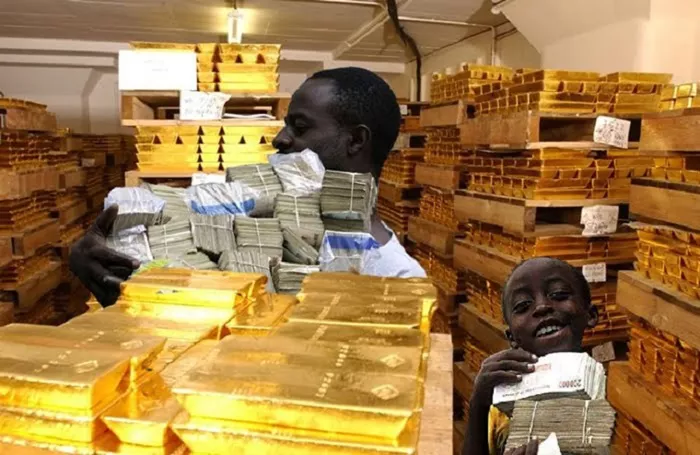In Filabusi, a rural town in southeastern Zimbabwe, luxury SUVs such as BMW X5s and Land Rover Defenders fill the streets, and modern cash-built homes are sprouting rapidly. Local bars sell whiskey only by the bottle, reflecting newfound prosperity fueled by soaring gold prices.
Gold prices have surged to historic highs this year, propelled in part by ongoing global uncertainties, including trade tensions initiated by former U.S. President Donald Trump. This rally has benefited more than 700,000 informal and artisanal miners in Zimbabwe, who have flocked to gold-rich areas, injecting vitality into an economy long marked by instability.
In the first five months of 2025, deliveries of gold by these miners to a state-owned refinery nearly doubled compared to the same period last year, surpassing 11 tons and significantly boosting Zimbabwe’s export revenues. At this pace, gold export earnings for the year could exceed 2024’s by $1 billion.
“The favorable prices are very encouraging for miners,” said Wellington Takawara, chairman of the Zimbabwe Artisanal and Small-Scale Sustainable Mining Committee. “This year looks very promising. We must seize the opportunity.”
Similar dynamics are unfolding across Africa with mixed outcomes. Ghana, the continent’s largest gold producer, expects gold sourced from small-scale miners to double to $12 billion by next year. Ethiopia’s central bank reports record gold deliveries bolstering its reserves. Conversely, in eastern Democratic Republic of Congo, armed groups are forcing locals to mine gold amid rising prices.
For around 4% of Zimbabwe’s population engaged in gold mining and their families, the sector remains a vital source of income. The country’s economy has struggled since a violent and failed land reform program in 2000 triggered a collapse in exports, famine, hyperinflation, and currency crises. Formal employment opportunities dwindled, prompting millions to seek livelihoods abroad, especially in South Africa and the UK. Today, gold mining offers one of the few viable means of survival amid soaring prices.
Since Trump’s presidency began, gold prices have risen 22%, surging 60% since early last year. On May 6, prices hit a historic peak of $3,432 per ounce, with Goldman Sachs forecasting a year-end price of $3,700.
Responding to the boom, Zimbabwe’s central bank has ramped up cash purchases of gold, aiming to buy a record 40 tons in 2025, up from $2.5 billion worth in 2024 — a 37% increase. In April, artisanal miners accounted for three-quarters of gold deliveries, a stark contrast to a few years ago when much was smuggled out of the country.
For artisanal miner Mxolisi Dube, the price surge has been life-changing. The 33-year-old, who began mining illegally in 2008, now works legally on mine sites thanks to cooperation with mine owners. Wearing a navy-blue uniform and headlamp, he described how his income has risen dramatically.
“At the end of the month, you definitely earn something,” Dube said, flashing a copper tooth and wearing a copper chain. “You’re protected. Without a company, you’d always be running.”
Mine operators, grappling with outdated equipment and limited funds, increasingly rely on artisanal miners wielding picks and shovels to sift river sands for gold, accelerating extraction.
“This means we always have ore available and can do more processing,” said Meli Nkulumo, manager of the Makumbar 7 mine, located 12 miles west of Filabusi. Artisanal miners were invited to work there two years ago.
Workers at the mine use Elon Musk’s Starlink internet to compare central bank prices with global benchmarks, often checking Goldprice.org.
“The rise in gold prices benefits everyone,” said acting mine manager Thulani Ndlovu. “We can also expect wages to go up.”
Despite the promise, mining remains arduous. Workers chip underground rock with picks, load it onto excavators, then hoist it up with winches. Their only sustenance during eight-hour shifts is maheu, a fermented maize drink.
The gold rush has visibly transformed Filabusi’s outskirts, especially in Bekezela, where new brick homes with electric fences, water tanks, and solar panels are under construction. The local council is rezoning land for housing and business, and four-wheel drives queue at car washes to remove dust from nearby plains.
Thabo Mpofu, manager of the Next Generation bar, said the establishment bustles with diverse patrons spending lavishly. He even witnessed a customer pour a bottle of Hennessy cognac on the floor to flaunt wealth.
The boom has also curbed crime, including illegal mining incursions.
“There is no bad activity here,” said Melusi Nyoni, manager of Fred and Fernando mines near Filabusi. He allows artisanal miners to work in shafts as deep as one kilometer. “There is gold everywhere,” he said.
However, mining is dangerous due to rudimentary equipment and limited safety measures. The Zimbabwe Mining Association’s latest report states that 87% of 186 mining fatalities involved informal miners. In late May, a mine collapse near Chegutu in northern Zimbabwe killed four workers.
Yet, as long as gold prices keep rising, these risks appear secondary to many miners who endure months living in remote wilderness camps to scrape out a livelihood.
Related Topics:
Vietnam to Reform Gold Trading Regulations This Month
Central Banks Drive Gold’s Record Bull Market Amid Secrecy
Gold Rises Amid U.S.-China Trade Uncertainty and Inflation Data

